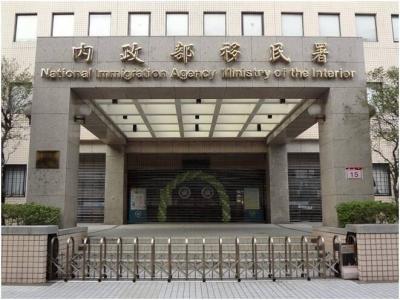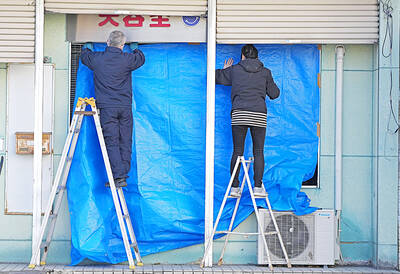The Air Defense Missile Command is to be merged with the air force next month, a move expected to enhance and streamline the nation’s air defense command system.
The merger is to take effect on Wednesday — with command, now under the management of the Ministry of National Defense’s General Staff Headquarters — to be put under the purview of the air force, military sources said.
With Patriot Advanced Capability-3 missile systems, Tien Kung III surface-to-air missile systems and Hawk anti-aircraft missiles, the command is responsible for medium-to-long-range air defense and controls tactical weapons, such as Hsiung Feng IIE cruise missiles.
The command is reportedly to merge with the Air Defense Artillery Command by the end of the year to streamline the chain of command and augment operational efficiency.
The Air Defense Artillery Command has the “Skyguard” short-range air defense system — with AIM-7 Sparrow surface-to-air missiles — and the Antelope air defense system with batteries of Tien Chien-I missiles.
To counter China’s advanced missile threat, the command is to become a top military unit akin to the three branches of the military. The Air Defense Missile Command is a brigade-level unit led by a major general. Following the merger, it will be a corps-level unit led by a lieutenant general.
The reorganization and merger are to counter China’s deployment of more than 1,400 missiles against Taiwan and are in response to a doctrinal shift in the nation’s defense strategy from “effective deterrence” to “multiple deterrence.”
The merger is the latest in a series of missile unit reorganizations.
The ministry established the first missile batteries in 1959 under the army when the government acquired the US-made Nike-Hercules surface-to-air missile. The missile command was established in 1979.
In 2004, the ministry merged the navy’s Hai Feng Shore Based Anti-ship Missile Squadron with the missile command and put it under the ministry’s General Staff Headquarters.
In 2006, the Hai Feng squadron was returned to the navy and the missile command’s air defense troops were transferred to the air force.

A small number of Taiwanese this year lost their citizenship rights after traveling in China and obtaining a one-time Chinese passport to cross the border into Russia, a source said today. The people signed up through Chinese travel agencies for tours of neighboring Russia with companies claiming they could obtain Russian visas and fast-track border clearance, the source said on condition of anonymity. The travelers were actually issued one-time-use Chinese passports, they said. Taiwanese are prohibited from holding a Chinese passport or household registration. If found to have a Chinese ID, they may lose their resident status under Article 9-1

Taiwanese were praised for their composure after a video filmed by Taiwanese tourists capturing the moment a magnitude 7.5 earthquake struck Japan’s Aomori Prefecture went viral on social media. The video shows a hotel room shaking violently amid Monday’s quake, with objects falling to the ground. Two Taiwanese began filming with their mobile phones, while two others held the sides of a TV to prevent it from falling. When the shaking stopped, the pair calmly took down the TV and laid it flat on a tatami mat, the video shows. The video also captured the group talking about the safety of their companions bathing

PROBLEMATIC APP: Citing more than 1,000 fraud cases, the government is taking the app down for a year, but opposition voices are calling it censorship Chinese Nationalist Party (KMT) Chairwoman Cheng Li-wun (鄭麗文) yesterday decried a government plan to suspend access to Chinese social media platform Xiaohongshu (小紅書) for one year as censorship, while the Presidential Office backed the plan. The Ministry of the Interior on Thursday cited security risks and accusations that the Instagram-like app, known as Rednote in English, had figured in more than 1,700 fraud cases since last year. The company, which has about 3 million users in Taiwan, has not yet responded to requests for comment. “Many people online are already asking ‘How to climb over the firewall to access Xiaohongshu,’” Cheng posted on

A classified Pentagon-produced, multiyear assessment — the Overmatch brief — highlighted unreported Chinese capabilities to destroy US military assets and identified US supply chain choke points, painting a disturbing picture of waning US military might, a New York Times editorial published on Monday said. US Secretary of Defense Pete Hegseth’s comments in November last year that “we lose every time” in Pentagon-conducted war games pitting the US against China further highlighted the uncertainty about the US’ capability to intervene in the event of a Chinese invasion of Taiwan. “It shows the Pentagon’s overreliance on expensive, vulnerable weapons as adversaries field cheap, technologically